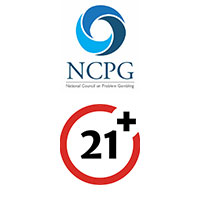One of the reasons blackjack has become such a popular casino game is that it has a low house edge. Even the worst blackjack games have a smaller house edge than other games in a casino. Of course, the small house edge in blackjack is based on perfect play.
Playing with basic strategy provides the player with knowledge of the correct plays to make when playing blackjack. However, there’s a way to bring the house edge lower and even eliminate it when playing some blackjack games. Stop me if you’ve heard this before but card counting isn’t illegal, it’s frowned upon.
Counting cards isn’t easy and a casino may ask you to leave if you’re caught. However, it’s not illegal and the skill of counting cards can be beneficial and make the casino experience better. Recreational blackjack players will enjoy being able to play longer and experienced gamblers will enjoy having a better chance to win money.
Counting cards give the player an advantage so that they can have a better idea of the cards remaining in the deck. If the count is good, the player can increase the bet. Likewise, if the count is bad the player can decrease the amount bet.
Different Card Counting Methods
Our Card Counting page has numerous methods which to track the cards that have been dealt:
Hi / Lo System – This system was first introduced by Edward Thorp in his book, Beat the Dealer. It is the simplest system, using +1, 0 and -1 for each card. This is a balanced system, too, which means that when you go through an entire deck, you should end up at 0.
Hi Opt 1 System – This was developed by Charles Einstein in 1968. This is similar to the Hi / Lo System except that 2s and aces are assigned a 0. This makes the system more accurate but at the cost of being more difficult because you need to keep an ace side count.
Hi Opt 2 System – This adaptation of the Hi Opt 1 System was created by Lance Humble in the 70s. It’s more accurate than it’s predecessor, but it’s even more difficult because you need to keep a side count for 8s and 9s, too. That’s on top of needing to keep a true count (for multiple decks).
KO System – This system was developed by Ken Fuchs and Olaf Vancura in 1998. The KO is considered an unbalanced system, because +1s are assigned to 7s, making the overall count end at +4 when you go through an entire deck (instead of 0).
Uston Advanced Count – This system was developed by Ken Uston. It’s considered one of the most accurate card counting systems, but also one of the most difficult to learn and use. The UAC assigns a -1, 0, +1, +2, or +3 to each card. You also need to keep a side count for aces.
Zen Count – The Zen Count was created by Arnold Snyder. This balanced system assigns -2, -1, 0, +1 and +2 to each card. You will also need to figure the true count (before betting). You can learn more about the Zen Count on the Blackjack Forum, or in the book, Blackbelt in Blackjack.
Omega II Count – This was first published in Blackjack for Blood, written by Bryce Carlson. Players will want to figure out the true count, but keeping a side count isn’t necessary (but it is more accurate). This system assigns the values -1, 0, +1 and +2 to each card.
10-Count – The 10-Count was created by Edward Thorp. No one uses it anymore, but that doesn’t make it ineffective. Thorp tested it in Vegas and won more than $11,000 in a weekend. It paved the way for the systems used today, too.
Wong Halves Count – This was created by Stanford Wong, and was first introduced in his book, Professional Blackjack. It is a difficult, yet accurate system to learn and use. This system assigns -1, 0, +0.5, +1 and +1.5 to each card. You also need to figure the true count.
Red 7 Count – This system was developed by Arnold Snyder. Players will need to keep an Initial Running Count (IRC), which starts with -2 for every deck in the game. For example, one deck would be -2, 4 decks would be -8, etc. Then you start counting from there. You can learn more about this system in Blackbelt in Blackjack.
Easiest Way To Count Cards
The Hi / Lo System is probably the easiest way to count cards. Not surprisingly, this is also the most popular method for new card counters. Players will attach a number value to each card.
Cards valued from 2-6 = +1
Cards valued from 7-9 = 0
Cards valued from 10-Ace = -1
The player will count every card in play. This has to be done rather quickly since hands take less than a minute to play. The player will also want to be stealth about counting cards since casino security doesn’t like card counters.
The higher the count becomes, the better the remaining cards in the deck. Better cards have a value of 10 through Ace. This gives the player a better chance of winning the hand. A high count is usually a good time to increase the bet since the hand is to the player’s benefit.
Should You Count Cards?
Like all casino gambling, counting cards doesn’t guarantee that the player will win every session. Over time, the skill should be beneficial to the player by allowing them to play longer or to possibly win money. Just remember, casinos are always looking to see if someone may be counting cards and you’ll be removed from the table if you’re caught.
